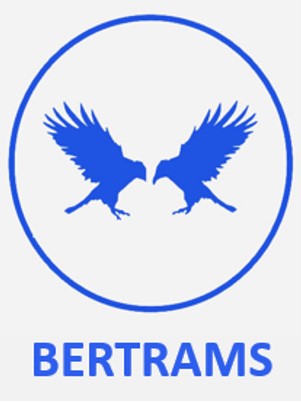The Nash Equilibrium in Sport
Intra-team competition affecting team dynamics!
We analyzed the situation in Formula One Teams with perplexity.ai (see sources below):
When analyzing Formula One racing from 1986 onwards, there are several notable examples of intra-team rivalries that escalated to the point where it negatively impacted the overall team performance. These situations often demonstrate how the pursuit of individual success can undermine collective goals, aligning with the concept of Nash Equilibrium in game theory. Here are some prominent examples:
McLaren: Senna vs. Prost (1988-1989)
Ayrton Senna and Alain Prost’s intense competition at McLaren led to several on-track collisions and a breakdown in team harmony 1. Their rivalry culminated in the controversial 1989 Japanese Grand Prix collision, which decided the championship in Prost’s favor. This feud ultimately led to Prost leaving McLaren for Ferrari in 1990, weakening the team overall.
Williams: Mansell vs. Piquet (1986-1987)
Although slightly before the specified timeframe, this rivalry’s effects lingered into the early 1990s. Nigel Mansell and Nelson Piquet’s intense competition within Williams led to them taking points off each other, allowing Alain Prost to win the 1986 championship for McLaren 5. This demonstrated how internal competition can allow external rivals to capitalize.
McLaren: Hamilton vs. Alonso (2007)
Lewis Hamilton and Fernando Alonso’s rivalry at McLaren in 2007 is a classic example of intra-team competition gone awry. Their intense battle for supremacy within the team led to several controversies, including the infamous qualifying incident in Hungary 1. This internal strife allowed Kimi Räikkönen of Ferrari to snatch the championship by a single point, demonstrating how team disharmony can cost championships.
Red Bull: Vettel vs. Webber (2010-2013)
Sebastian Vettel and Mark Webber’s relationship at Red Bull was often strained, particularly after incidents like the collision at the 2010 Turkish Grand Prix and the “Multi-21” controversy in Malaysia 2013 15. While Red Bull did win championships during this period, the tension between the drivers often threatened team harmony and potentially cost them additional successes.
Mercedes: Hamilton vs. Rosberg (2014-2016)
The rivalry between Lewis Hamilton and Nico Rosberg at Mercedes is perhaps the most recent and high-profile example of intra-team competition affecting team dynamics. Their intense battle for supremacy led to several on-track collisions, most notably at the 2016 Spanish Grand Prix 11. While Mercedes dominated during this period, the tension between the drivers often created a difficult working environment and threatened the team’s success.In these situations.
In these situations, the concept of Nash Equilibrium is evident:
Each driver, acting in their own self-interest, creates a situation where neither can improve their position without the other changing their strategy.
This often leads to suboptimal outcomes for the team as a whole.
For instance, in the case of Hamilton and Rosberg, their aggressive racing against each other sometimes risked double retirements (as in Spain 2016), which could have jeopardized Mercedes’ constructors’ championship. Similarly, the Vettel-Webber rivalry at Red Bull often led to situations where both drivers compromised their races in their attempts to outdo each other.
What we do not know from these findings:
What is the competitive advantage of the rivalry of the drivers?
- When drivers like Senna and Prost or Hamilton and Rosberg compete at the highest intensity, they create what organizational researchers call “critical decision moments” that force the entire team to operate at peak capability.
Decision Quality Under Stress – When drivers push each other to the absolute limit, teams must make split-second strategic decisions with championship implications. Mercedes, during the Hamilton-Rosberg rivalry, had to develop sophisticated protocols for managing tire strategy, pit stop timing, and team orders under immense pressure. These high-stakes decisions—made in real-time with millions watching—build great organizational decision-making muscles.
The “but” … No universal superiority:
“The overwhelming majority of conflict management research originates from Western contexts, particularly the United States and Europe. – A comprehensive cross-cultural innovation study concluded that China, India, and Singapore all achieve innovation through different cultural pathways, with “no single approach universally superior”…
Cultural Dimensions and Innovation Performance
Hofstede’s cultural dimensions framework provides systematic tools for examining cultural variation in conflict orientation and organizational behavior. Key dimensions relevant to conflict management include:
Power Distance: The extent to which less powerful members accept unequal power distribution. Asian countries generally score higher (China: 80, Singapore: 74) than Western countries (United States: 40, Germany: 35). High power distance cultures may find adversarial challenges to authority uncomfortable, affecting the viability of adversarial collaboration.
Individualism vs. Collectivism: Western countries score higher on individualism (United States: 91) while Asian countries score higher on collectivism (China: 20, Singapore: 20). Collectivist cultures prioritize group harmony and face-saving, potentially making adversarial approaches more psychologically costly.
Uncertainty Avoidance: This dimension shows interesting variation. China scores relatively low (30), suggesting comfort with ambiguity, while many other Asian countries score higher.
”… this complicates simple East-West dichotomies.“
